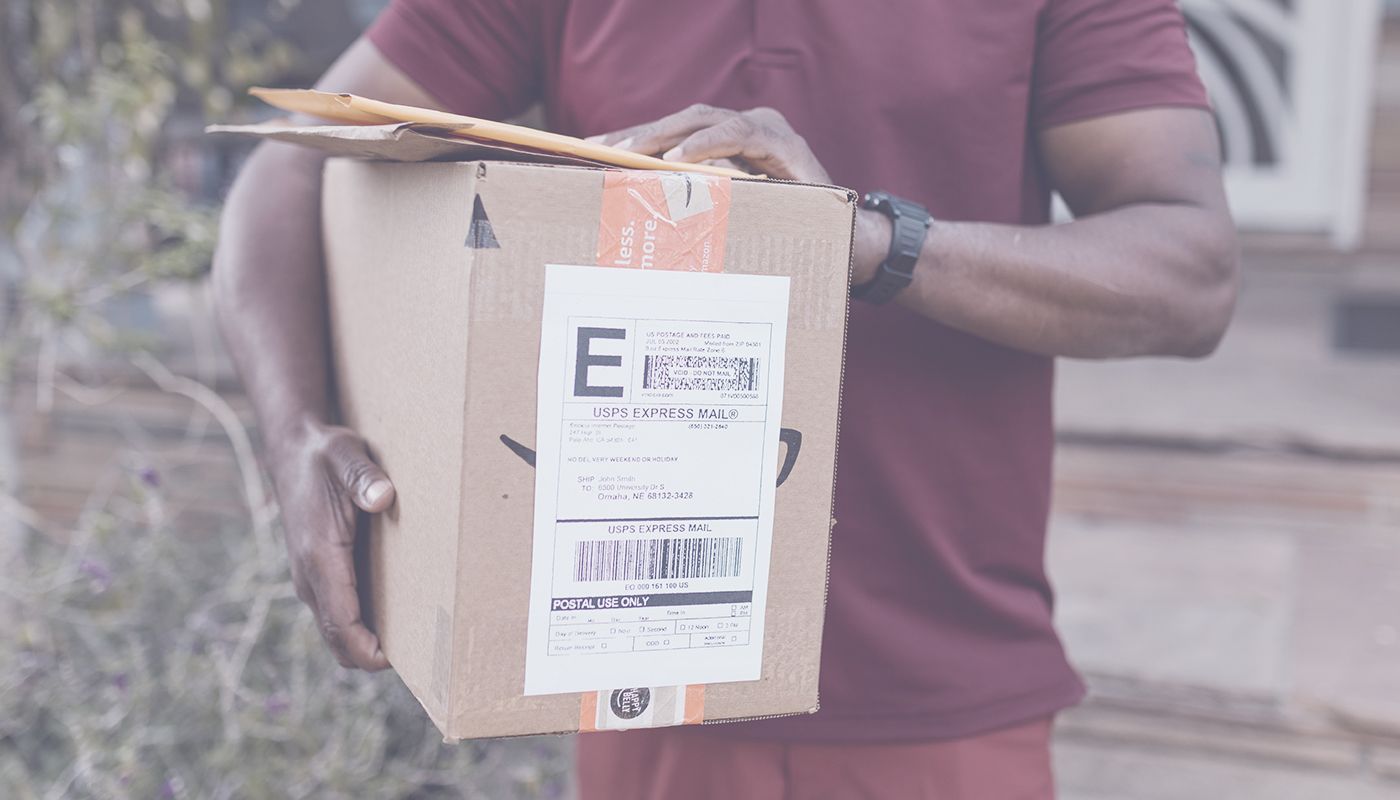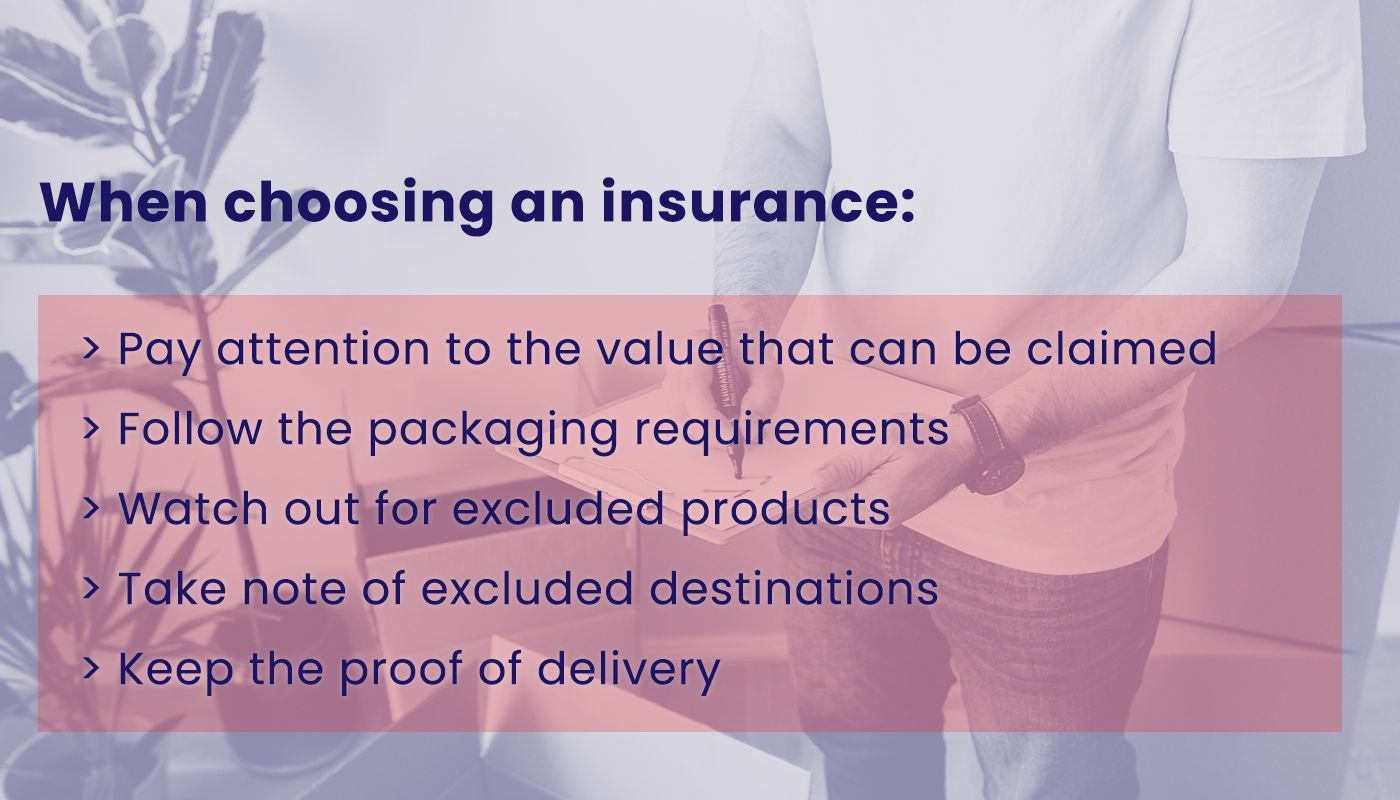Major shipping carriers are generally reliable, yet packages still might get lost or damaged. According to the statistics, last year was the highest annual U.S e-commerce growth in the last two decades with customers spending $861.02 billion online in 2020 in the U.S, which is up 44% compared to 2019.
Shipping goods always comes with a little risk and now more than ever, merchants need to be prepared if this happens. This is where shipping insurance can be of help, and not only for covering costs in case of loss or damage, but also maintaining a good reputation of your business among your customers.
In this article, you will find reasons why shipping insurance can be beneficial, when to definitely consider purchasing it, what to consider when making a claim, and the costs you need to be aware of.

Shipping insurance meaning
Simply put, shipping insurance is a policy that a merchant who ships goods can purchase to get reimbursed for any shipments that are lost, stolen or damaged while in transit with a courier.
Shipping insurance can be bought either through carriers or third party vendors at the time of shipments. The cost and conditions of the insurance depend on the declared value of the goods.
The advantages of insuring your shipments
Getting shipping insurance is not always necessary and at times shipment is already insured by default. However, for shipping internationally and shipping items you cannot afford to replace in the event of damage or loss, shipping insurance becomes vital.
These days more and more customers are willing to buy high-value products via online stores. The potential loss of such items will result in an unpleasant experience reflecting negatively on your brand.
Luckily, the statistics show that such incidents can be redeemed in the eyes of customers. For winning customer loyalty in terms of customer care, the top ranking reason why 77% of customers would be happy to give repeat business to a retailer is resending lost or damaged items with a fast shipping.
This is where shipping insurance plays a significant role as you will receive advantages, such as:
- Compensation for any damage or loss of your package, provided that it’s properly packed.
- Reimbursement of the purchase value plus shipping costs so you could resend a replacement to your customer without any additional costs to you.
- A peace of mind that you can offer customers fast service even if something goes wrong.
But, of course, shipping insurance costs a little extra money. So understanding all the shipping costs together with the product, packaging, courier fees and insurance is a must to have a profitable business.
Perhaps you are thinking that you could simply let customers pay all the shipping related fees. However, 74% of online shoppers say that free shipping is one of the most important factors at the checkout. Therefore, thinking through how to include shipping fee in the product price or what costs you are happy to take care of is of a big importance.

When to insure your packages and what to take into consideration?
When deciding whether or not to insure your shipments, you need to assess the likelihood of it being lost, damaged or stolen while in the hands of a third party - the carrier.
- Declared value. Both carriers and shippers focus on the shipper’s declared value, in other words, what you claim your parcel is worth. In case of an accident, you have to file a claim and prove the item’s value. Your insurer will either pay you for the real value or the declared amount, whichever is smaller.
- Coverage by included insurance. Most major carriers offer free coverage up to a certain amount. For example, default shipping insurance for UPS and FedEx is included for packages valued up to $100.
Take note: The declared value covered by carriers most likely doesn’t cover materials and shipping. The coverage for packaging and shipping costs are usually provided by a third party shipping insurance company.
Consider the risks
Considering the risk is the first step in deciding if you should insure your shipment or not.
- Item type - is the item likely to be stolen? These are usually items, such as jewelry, electronics, brand clothing etc., that can easily be resold and that attracts people with bad intentions. Try to avoid using branded boxes if possible.
- Delivery destination. Some areas are riskier than others in terms of loss and damage. Implementing tracking as well as signature requirements can reduce the risk. Some insurance companies may not insure packages that are sent to some high-risk countries in Central America or in Africa. Make a note of this before deciding to cross borders.
TIP: During holidays carriers process an immense number of packages, which increases the chance of something going wrong. It always makes sense to be extra cautious around these times and purchase shipping insurance.

Calculate the costs
Assess if paying for insurance makes sense or would it be wise to take the cost of replacement on yourself. To understand if getting an insurance is worth it, you should think about:
- The value of your products
- The volume of your shipping
- The number of products that are likely to be damaged or lost
Shipping insurance costs vary depending on the carriers you are using. Also, you need to decide how much coverage you need and then do a thorough research of what you will actually be paying for.
For example, USPS insurance cost is a perfect example of how the price changes depending on the value of the shipment:
- Value up to $50 is $1.65.
- $50.01 to $100 is $2.05.
- $100.01 to $200 is $2.45.
- $200.01 to $300 is $4.60.
- The price per additional $100 of insurance, valued over $300 up to $5,000, is $4.60 plus $0.90 per each $100 or fraction thereof.
For USPS insurance, it also is stated that the insurance only covers the actual value of the mail contents. As mentioned above, in this case you might have to pay for the packaging and the shipping fees yourself. And this takes us to the next point.
Understand what the shipping insurance covers
All the shipping insurance providers have their own terms and conditions that you need to familiarise yourself with. Especially with the fine print. Otherwise, your claim can be denied.
For instance, UPS insurance, FedEx insurance, and USPS insurance state that they don’t offer any coverage for precious stones, cash or coins. Some destination countries can also be left out of the coverage of your purchased shipping insurance. DHL, on the other hand, provides “all risks” insurance with broader coverage than the industry standard.

The set of rules to follow to ensure you will be covered in case of running into a problem:
- Pay attention to the value that can be claimed. If you have underinsured your shipment, you will just be losing money.
- Follow the packaging requirements to get your claim approved.
- Watch out for excluded products so you would only get extra insurance for items that can in fact be insured.
- Take note of excluded destinations to qualify for insurance coverage.
- Keep the proof of delivery, it will be needed when claiming any damages.
How to make a claim?
If you ever get into the situation of needing to make a claim, you will need to have the following ready:
- Purchase and sales invoice
- Image of both the inside and outside packaging
- Image of the damage to the product
- Proof that the package was damaged
Of course, the list can be longer depending on your insurance provider. But these are the basics that you will need to be able to file in to qualify for the pay-out.
Submit claims as soon as possible
It’s crucial to start your claim process as soon as you find out that something has happened to your shipment. Take note of the courier’s maximum time to file a claim.
For example, USPS Insured Mail offers a duration of 15-60 days whereas for UPS it is 5 months in case the shipment was delivered nationwide. FedEx offers a 60 days to file the claim if the packages have not been delivered.
To sum up
Shipping insurance can offer a peace of mind that you can act fast and cost-effectively to deliver customers what was promised. This way, even in sticky situations you can keep building those long-lasting relationships.
Make sure you always familiarize yourself with the fine print once you have decided to insure your shipments to avoid any unnecessary losses.





